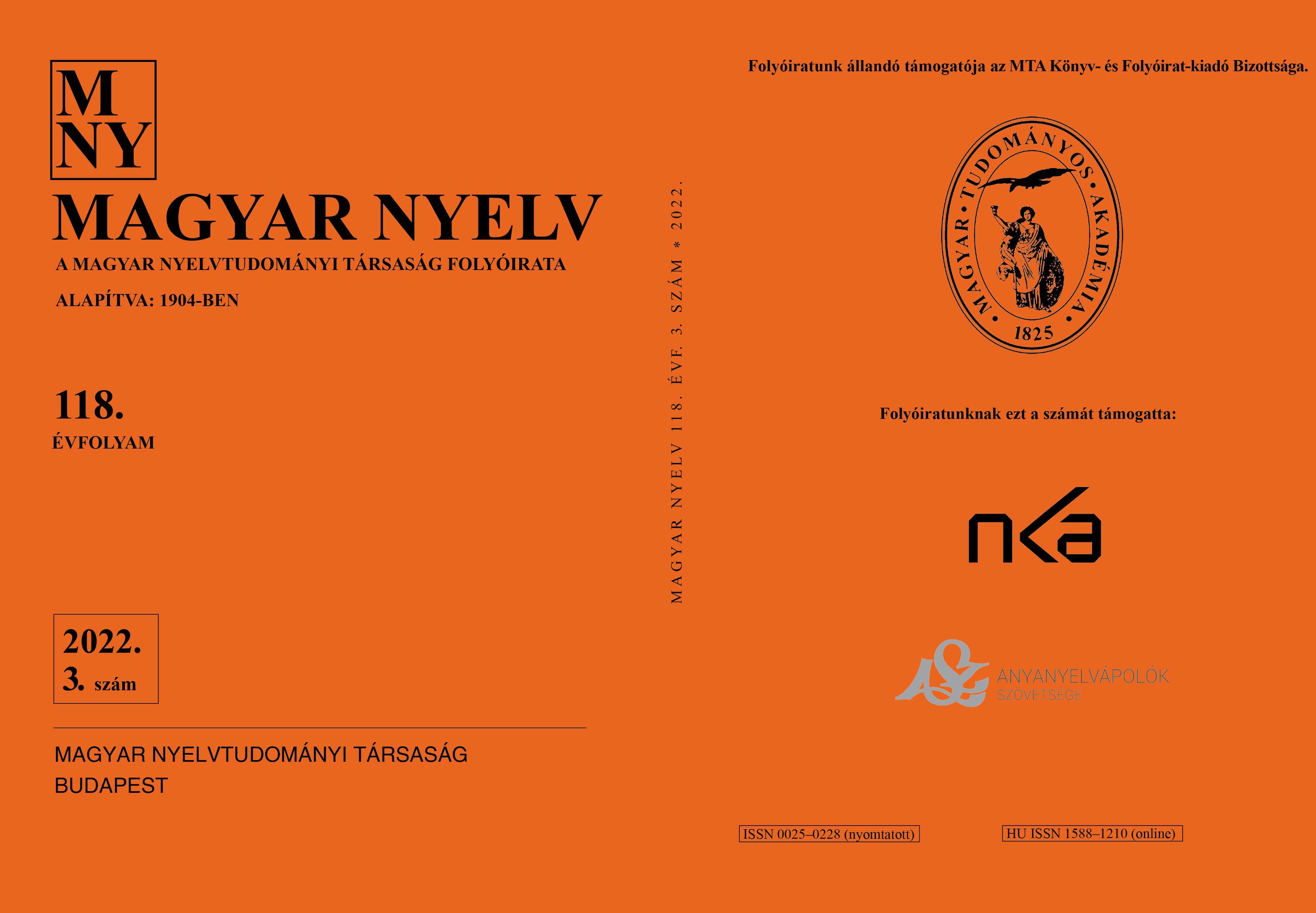A Dominican Breviary as a source in the Domonkos codex, with a view of the Cornides codex
Part 2
DOI:
https://doi.org/10.18349/MagyarNyelv.2022.3.276Keywords:
Latin sources of vernacular codices, medieval translation of legend, liturgy and vernacular translation, breviary, miracles of St. Dominic in vernacular, Domonkos codex, Cornides codex, legends of St. Praxedis and St. PotentianaAbstract
In the vernacular Domonkos codex – The life of St. Dominic; an apograph from 1517, copied in the Dominican Convent on what is Margaret Island today in the Danube in Budapest – there is a passage of 11 pages arranged in two blocks (pp. 171/11–176/8; 299/18–305/12), for which the Legend of St. Dominic written by the Italian hagiographer Petrus Calus (in Italian: Calo, in 1340) was identified earlier (Katona 1906) as its Latin source. Yet, later on, the opinion came to be held that Calo’s work could not have been a direct source for the codex, because the translation differs greatly from the assumed source. The authors of this paper find – using the critical edition of Petrus Calo’s text by Simon Tugw ell OP (1997) – that the actual source of the Hungarian translation of the pages in question was probably a Dominican breviary published in Venice in 1494. This is a reedition with some differences of the breviary published first in 1487 in the same place, for which a completely new legend of Dominic had been compiled. The passages in question in the breviary are extracts from Calo’s text. The compiler of the Domonkos codex chose seven miracles from the brief readings collected at the end of the breviary for the celebration of Dominic on Thursdays throughout the year. The paper compares the Hungarian and the Latin texts of two miracles in detail in order to prove that the latter was the source of the Hungarian translation. At the same time, it shows how a lectio varians “cuiusdam praepositi filius” of the breviary became a crucial point in detecting the actual source of the vernacular translation. The authors also explored the Cornides codex copied parallel with the Domonkos codex by the same copier and found that the same breviary could have been the source e.g. of the legends of Praxedis and Potentiana in it as well. The authors also suppose that at the end of the 15th century the Hungarian Dominicans must have owned a copy of this breviary, even though there is no factual evidence of this. In the light of the breviary as the source, the question of the possible date of the compilation of the original text of the Domonkos codex is also discussed.
Downloads
Published
Issue
Section
License
Copyright (c) 2022 Ilona M. Nagy, Sebestyén Kiss

This work is licensed under a Creative Commons Attribution-NonCommercial-NoDerivatives 4.0 International License.
Magyar Nyelv is a Diamond Open Access periodical. Documents can be freely downloaded and duplicated in an electronic format, and can be used unchanged and with due reference to the original source. Such use must not serve commercial purposes. In the case of any form of dissemination and use, Hungarian Copyright Act LXXVI/1999 and related laws are to be observed. The electronic version of the journal is subject to the regulations of CC BY-NC-ND (Creative Commons – Attribution-NonCommercial-NoDerivatives).
The journal permits its authors, at no cost and without any temporal limitation, to make pre-print copies of their manuscripts publicly available via email or in their own homepage or that of their institution, or in either closed or free-for-all repositories of their institutions/universities, or other non-profit websites, in the form accepted by the journal editor for publication and even containing amendments on the basis of reviewers’ comments. When the authors publicize their papers in this manner, they have to warn their readers that the manuscript at hand is not the final published version of the work. Once the paper has been published in a printed or online form, the authors are allowed (and advised) to use that (post-print) version for the above purposes. In that case, they have to indicate the exact location and other data of the journal publication. The authors retain the copyright of their papers; however, in the case of an occasional secondary publication, the bibliographical data of the first publication have to be included.



